My deer do not read the deer-resistant plant lists. I’m on the deer highway, with six-point bucks, full-grown does, charmingly spotted fawns, and yearlings almost 24/7 year round. In summer the adults lie down under my ancient apple tree, full as a tick after gorging themselves on fallen apples. In the middle of the day they watch me, with appropriate caution but no fear, as I work around them.
I mention this because heucheras, one of my favorite perennials for dryish shade, are found on many deer-resistant plant lists. My deer munch the heucheras, but they rarely demolish them. They often make a sleeping place among them, as would anyone looking for a soft place to rest.
Heucheras (alum root or coral bells) are varied in the extreme. Some are best in moist shady locations. Others prefer sun and moderate to regular water. A few take dryish shade. It’s the dryish shade ones I most favor, as I don’t water my yard in summer except for those few plants that demand it.
Heuchera maxima (Island alum root), the California native featured at the top of the page, has large, lush green leaves mounding a foot high and two feet wide, and delicate, airy sprays of pinkish white springtime flowers that rise a foot or so above the leaves. Hummingbirds love it.
Heuchera, ‘Purple Palace’ prefers slightly acidic soil and occasional summer water.
It likes winter sun and at least partial summer shade. This makes it perfect for planting under winter-deciduous big-leaf maples, valley oaks (not coast live oak, which doesn’t like any summer water), and buckeyes.
It also, evidently, works well under vintage apple trees . . .
When you go to the nursery, be sure to ask whether the coral bell or alum root you are considering is a native species or a cultivated variety of a native species. Also ask how much shade and water it needs.
Do not be fooled by the multitude of coral bells out there. Unless you’re prepared to water fairly often, you must get low-water species or varieties.


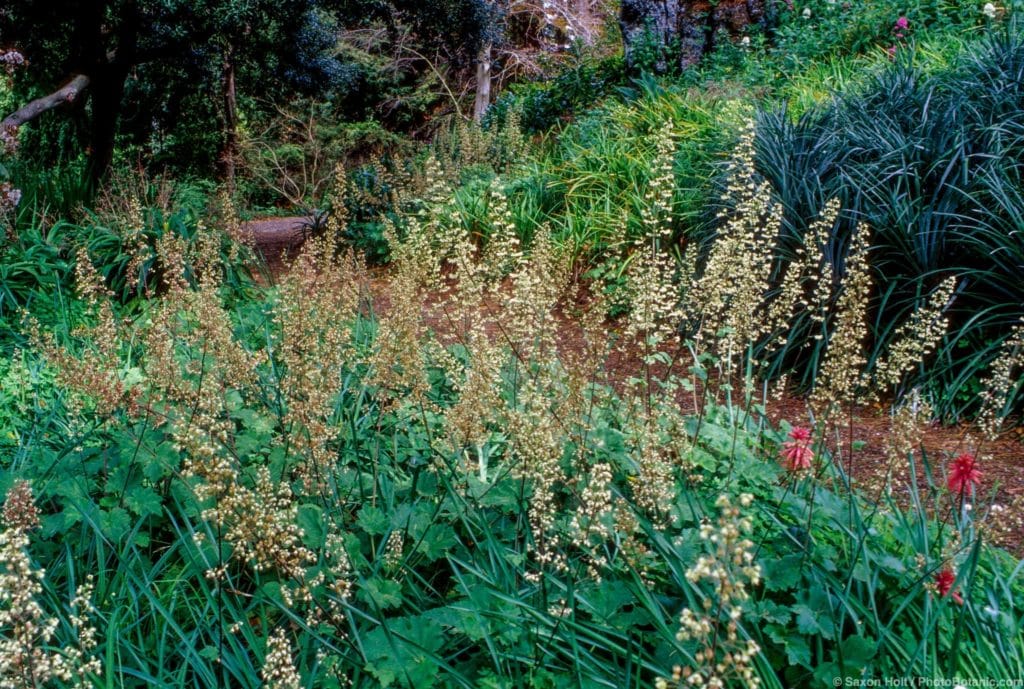
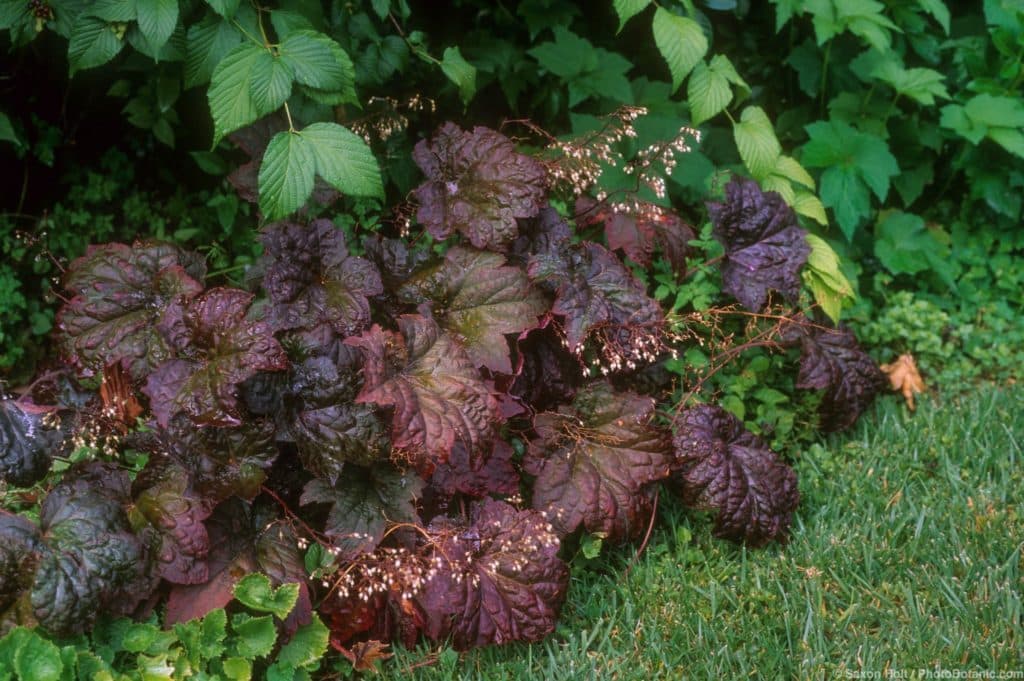
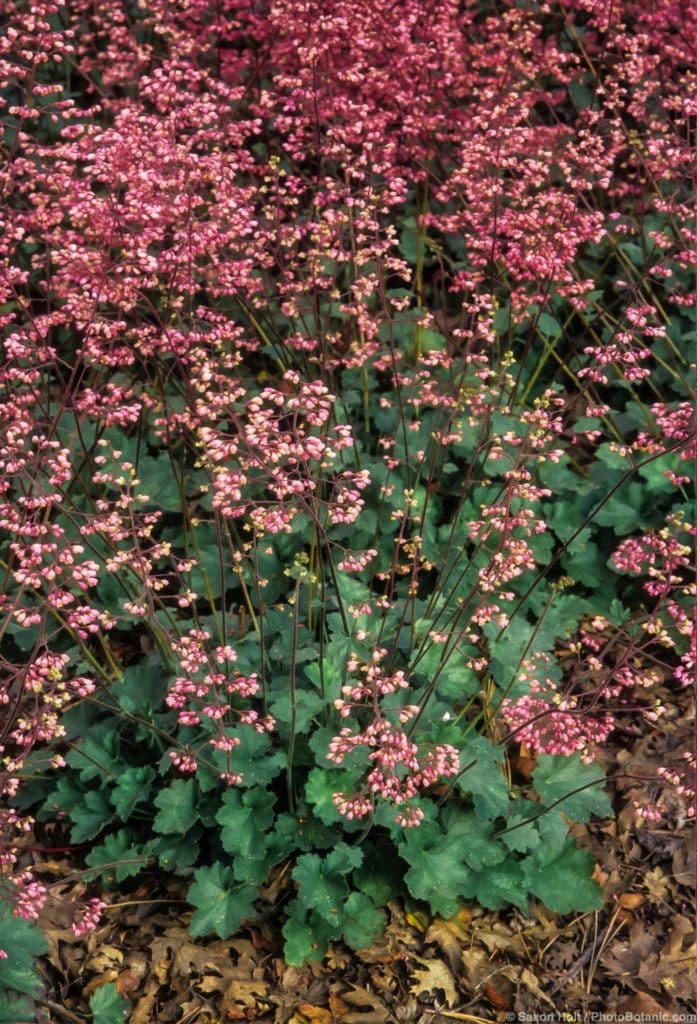
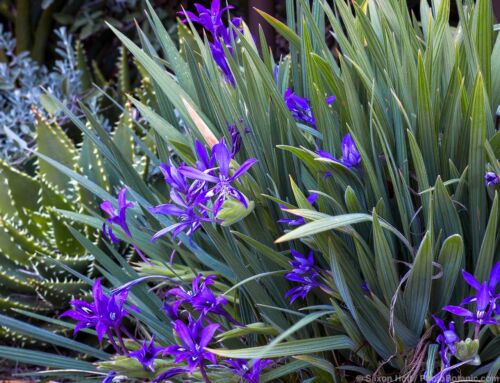
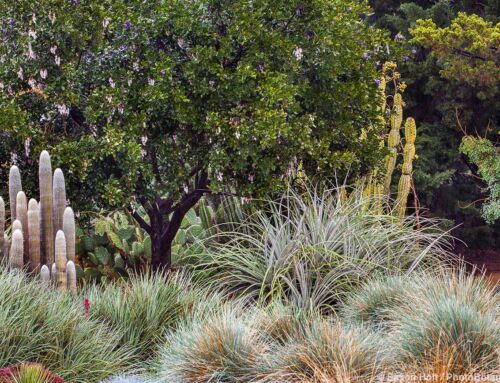
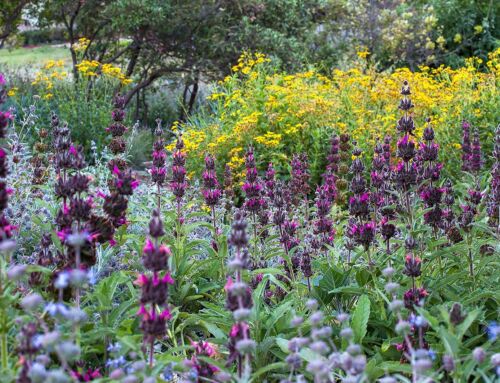
I live in a 55+community struggling with large lawn areas and no water. I am happy to see your book on landscape for dry places.
I will be ordering it. Turlock CA
Also a member of Modesto Garden Club and chair of our media group. We enjoyed your presentation here some time ago and our group also enjoyed the time you took answering our photography questions prior to the meeting.
Elizabeth
Thanks Elizabeth – Those large lawn areas are a thing of the past I’m afraid. . Meadows and bunch grasses can offer an alternative – provide you do have *some* water to keep it going. The Modesto group was a treat – so many interested gardeners ! Perhaps we shall meet again….
I’m trying Heuchera maxima for the 2nd time. I love the photos I’ve seen of it but the plants seem slow to establish in my garden. I planted 7 of them in half-day shade in late February but they’ve failed to gain any size despite regular water to help them get established. Do you have any tips? (Or am I simply being too impatient with them?)
Sorry for the slow reply Kris. The Heucheras probably did not like being planted in February when it is often cool and damp and roots did not grow. Many natives do most of their root growing in the winter when it is wet but Feb is too late for that winter. If they are still just sitting there, they are waiting for our next rain. Dob’t water them very much now but if the rains don’t come by mid October water them deeply at that point.
Use California natives when possible